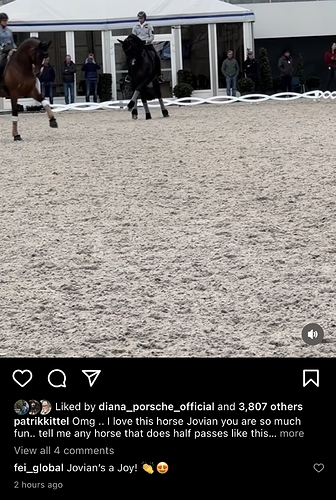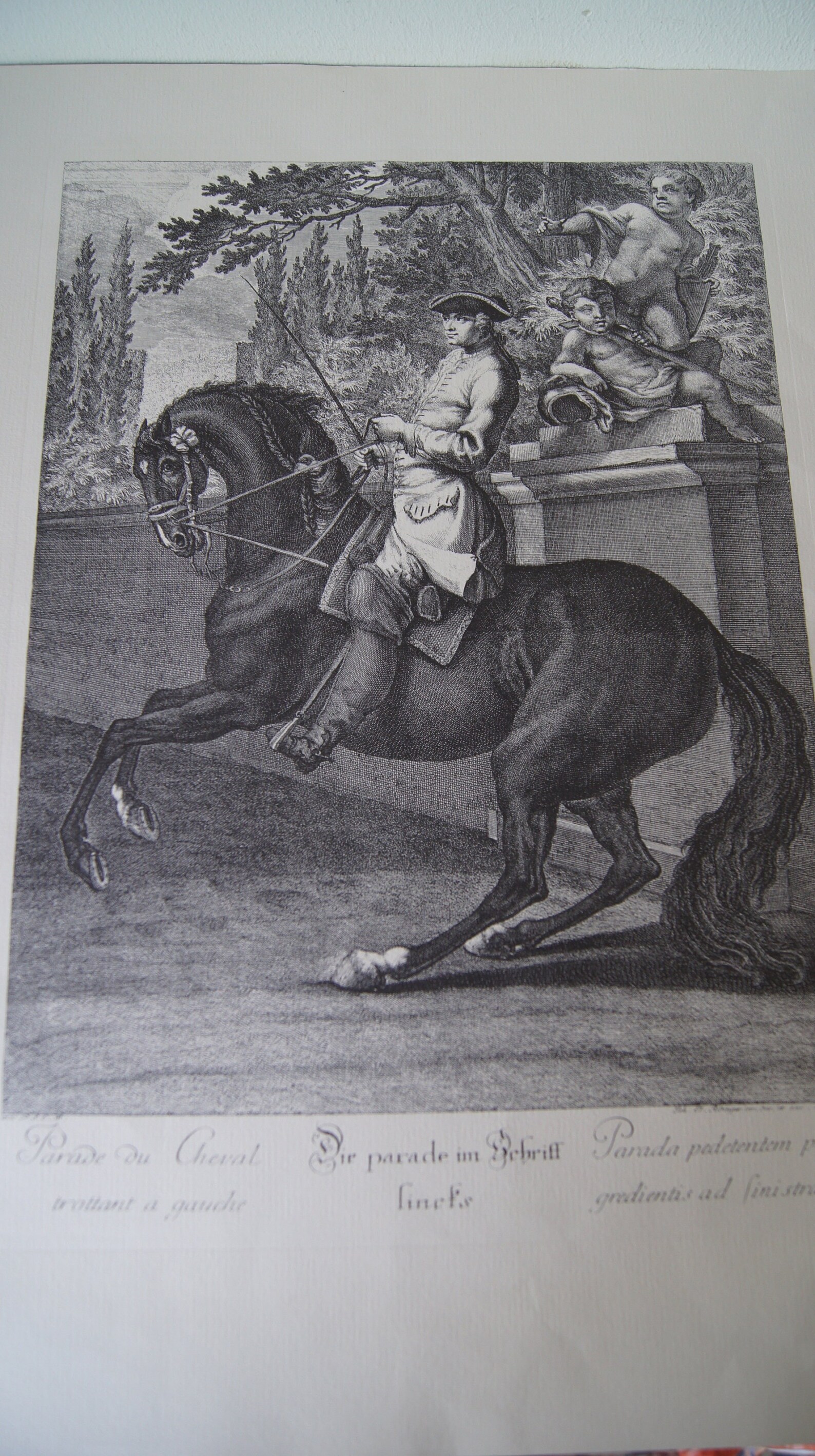I just replied on a new thread on judging
You want the hind leg joints to fold in all joints - so the haunches lower and hooves come more up and down. Not for the leg to straighten and reach forward. My gelding used to get 9s and 10s at walk in eventing because he has beautiful natural swing and reach. It took him 3 or 4 years in straight dressage work (because I choose not to jump since I don’t have depth perception) before he could really collect the walk - he naturally had that reach, and not the folding of all hind leg joints, so an attempt to artificially shorten/heighten steps would have simply broken his walk rhythm. 3 hoofprints overtrack isn’t a biggie for him, but collected walk was a challenge!
Great post. This has been common knowledge for years.
Good point and I will also add that is why knowledgeable riders and trainers are cautious about bringing young horses with big walks into contact too soon in their training - and esp. with trying to “collect” the walk. It is so, so easy to ruin a big swinging and rhythmical walk with good overtrack by asking the horse to shorten/collect the walk before he has developed the musculature needed to maintain the “bridge” as he folds the hindleg more underneath himself.
There was a bit of a hullabaloo some months back on another thread about a horse that had been described by a very BNT as having a “10” walk. The video that was posted showed some unevenness and not a pure rhythm at the walk, and some posters on the thread were sure the horse was either unsound or even neurological. But another video of the horse showed a nice, forward, flowing, rhythmical, and pure walk. I pointed out that the video with the good walk showed the horse in free walk, but in the other video, the rider was asking for some contact, which absolutely can affect the quality of the walk, esp. in a young horse (the horse in question was young - 6 y/o, IIRC). I also pointed out that the horse was a stallion and if he had been doing some breeding, could be a bit tight and sore in the back from jumping the phantom (or mare if doing live cover).
So a long post just to say that it is certainly true that big natural walks can be “ruined” by rushing to push a young or green horse into too much contact at the walk and to shorten/collect the walk too early in the horse’s training.
(And I do believe that although this does not fall under the heading of “horse abuse,” it does relate to training and even judging practices.)
[Edited for clarification]
I agree with you
Thank you for making me lol! So true. 
There’s no pressure on those nerves if there is no noseband or the noseband is fitted with two finger’s worth of spacing between bridge of nose and leather.
What do you think nosebands were designed for, if not to keep the mouth shut…?
I would love for Tota to answer to why they are still supporting Cesar Parra when they claim to care about horse comfort. Talk about oxy moron.
I thought it was also to help keep the bridle on and more stable on the face… don’t really know for sure but my nosebands definitely do not keep their mouths shut but perhaps help keep the bridle on when shaking away gnats and deerflies (keeps the crown from lifting up too high). Having a bridle actually shaken off, it is rather panic (me) inducing…
It served as a halter to tie/lead the horse after the bridle was removed. Remember, the original equestrian when Coubertain started the Olympics were cavalry officers. So the tradition of the tack that is used today evolved from what was used in mounted cavalry. Here is the bridle of an officer’s horse from the web site worldwar1centennial.org
Note that the bridoon of the double bridle is hung from the cheek pieces and the halter is underneath the bridle. Eventually this “halter” evolved into a noseband. Thus then “noseband” is really just an evolution of a halter and was never intended to keep the horse’s mouth shut.
The cavalry colonel that I learned to ride with was a stickler that the noseband be loose enough to put the palm of your hand under the noseband at the bony prominence of the nose.
The noseband has been around a lot longer than US Cavalry. The original noseband was designed to keep the mouth from gaping, in a bid to control the horse better.
The tack evolves. We don’t use the “serreta” or the 3-ring cavesson in competition. Why? Because the tack we currently use in “english” riding dates back from the “campaign school” of riding as opposed to the “manege school”
While I agree that the noseband predates the US Cavalry, I disagree that it was intended to strap the horse’s mouth shut. In most of the old books on manege riding, the objective was a very light hand…you don’t get that from a horse with its mouth strapped shut.
I am interested in the history of horse training and collect antique engravings. I have a small fortune invested in old out of print books and a collection of images of tack, I will try to find some of the engravings on line.
The Duke of Newcastle’s engravings show riding only from the noseband similar to this engraving by Ridinger. The rider has a loose rein on the curb and is riding off the rings of the noseband…which are attached to draw reins. This exactly is how I saw a rider from the Real Escuela starting to school a horse during his 2 years at the barn I was at.
The image is titled, “Parade du Cheval Trottant au Gauche”
Here is Duke of Newcastle

Here an image from Georg Winter’s 1672 book on horse training with closeup of the bridle showing use of the 3-ring cavesson during training.


Does he really? Where are you seeing that?
Nosebands must be a European creation as western bridles often do not have them.
I think of it more along the lines of what was the horse used for…and what was the appropriate tack for that work.
The “western” disciplines are a form of “functional” horse riding that is used to work cattle. That has evolved into stylized riding like WP, reining, but there are competitions that have functional components like team penning.
The “english” disciplines evolved from the “campaign school” of cross country riding required for the military (cavalry) and for fox hunting and the tack that was typically used for that work.
The current “competitive dressage” is a beauty pageant that started from what the military did when cavalry went to war, but currently has evolved to having to demonstrate no functional purpose.
Social media
wow, I need to go look then. Charlie is an idiot if he is publicly supporting Parra



